While learning photographer, you’ve probably found countless resources that share many photography tips. While some are actually helpful, the same cannot be said for all of them. Photographer Mads Peter Iversen shares some landscape photography tips to help you avoid the mistakes he made when starting out:
There Are No Perfect Settings
A common mistake that beginner photographers make is seeking out the camera settings. What settings did you use to take that image? What settings should I use to take this kind of photo? You may have asked or heard someone asking questions like these quite often. The truth is, there are no perfect settings for any given situation. Someone might tell you that you must use aperture settings like f/8, f/11, or even f/16 for landscape photography. But if the situation demands, you may need to go with f/2.8. If you still believe in memorizing camera settings and always going by the rules, get that idea out of your mind.
“The settings really are not that important as long as you get the photo.”
Be a Problem Solver
You might not always have the gear needed for a particular image with you. This isn’t a good reason not to take an image. Instead, think of ways you can use what you have. Iversen took three vertical shots and stitched them together when he didn’t have a wide angle lens for a landscape shot. Also, if you’re not happy with a particular image, change your settings around and see how it affects your images.
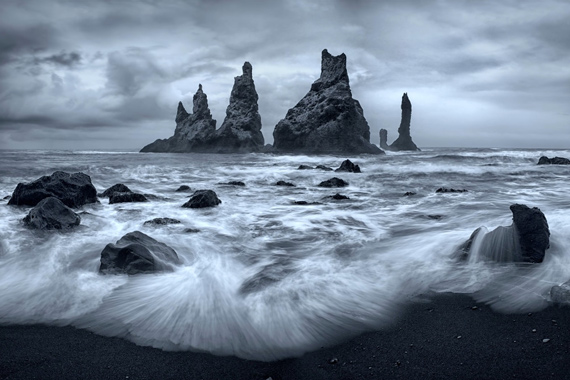
Avoid Formulaic Composition
Do the following “rules” sound familiar?
- Rule of thirds
- Golden ratio
- Leading lines
- Foreground, midground, background
- No central composition
These composition techniques are basic guides that definitely help you in improving your photography, but be extremely cautious when following them.
For instance, if the subject is strong enough, placing it in the middle of the frame makes an even greater impact. Also, after placing the subject in one of the thirds, if the image isn’t balanced, it won’t make an impression.
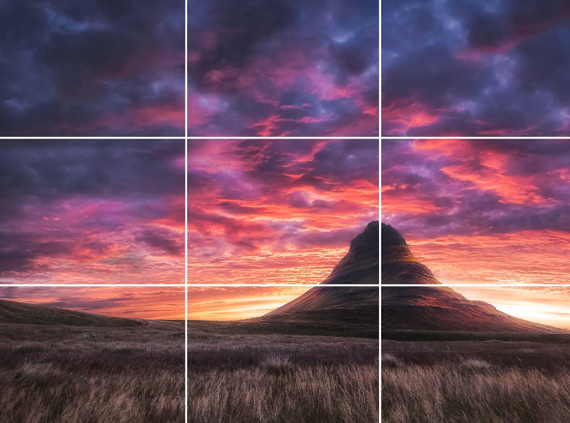
The mountain is in the right third but the left third feels unbalanced.
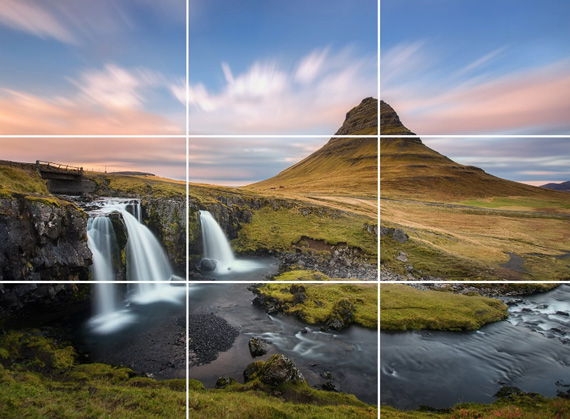
The stream on the left balances out the mountain on the right.
The same applies when you’re composing with a foreground, midground, and background. Forcefully trying to place a foreground subject doesn’t cut it. In order to make the image stand out, the foreground needs to be strong and interesting.
When composing your image, don’t just adhere to one of the composition rules. Try to mix things up to make a more dynamic photo. For instance, incorporate leading lines when composing with the rule of thirds. See how you can use the rule of thirds together with foreground, midground, and background. Open yourself up and think outside the box.
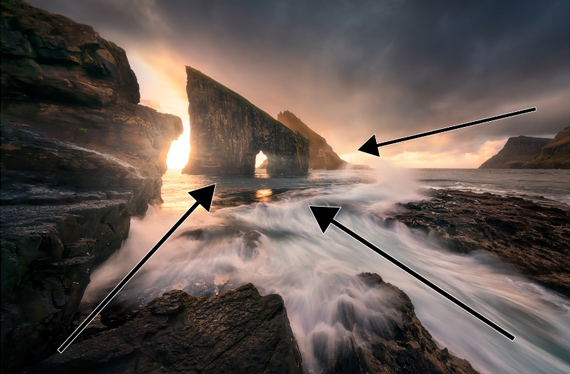
Landscape Photography is What You Want It To Be
“There are a lot of opinionated people out there who’ll tell you what the essence of landscape photography is. In my experience, there is no such thing and it is complete nonsense to attach such arbitrary concepts to another arbitrary concept such as landscape photography.”
Some require that landscape photos be in the same form they were captured in-camera. They don’t accept any level of alteration in the final image. But this doesn’t mean that you need to limit yourself to reality and keep a distance from post-processing. If you think of yourself as an artist, you have the liberty to present your work like an artist. You do not need to simply document reality. You have the liberty to express what you have pictured in your mind by means of your images.
“It is up to you to decide what you do. Don’t let anybody else make you feel bad for expressing what you like.”
You Can’t Do it On Your Own
“It is extremely inefficient to learn photography by yourself.”
Being in a circle of photographers will gain you input from other photographers regarding your work. This will also keep you motivated to photograph more. Ask other photographers what they feel about your photos. Participate in photo critiques. It may feel rough at first, but it will help you improve your skill.
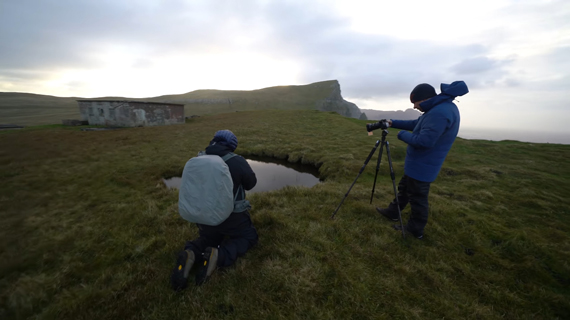
“Surround yourself with people who know what they’re talking about. You’ll learn so much more from engaging with other like-minded photographers. And the sooner, the better.”
Bad Weather is Good Weather
Bad weather can make for great photographs. But not always. For instance, stormy and rainy conditions work great around waterfalls. This just adds more drama to the image. However, be sure to take extra care of your gear if it’s not weather sealed. Similarly, snowy and foggy conditions can make for great moody images. You don’t necessarily need to avoid bad conditions. Instead, seek to make great images in challenging yet rewarding situations.
What other tips would you give to beginners?
Go to full article: Landscape Photography Tips to Learn Sooner Rather Than Later
What are your thoughts on this article? Join the discussion on Facebook
PictureCorrect subscribers can also learn more today with our #1 bestseller: The Photography Tutorial eBook
The post Landscape Photography Tips to Learn Sooner Rather Than Later appeared first on PictureCorrect.
from PictureCorrect https://ift.tt/2MyXele
via IFTTT






0 kommenttia:
Lähetä kommentti